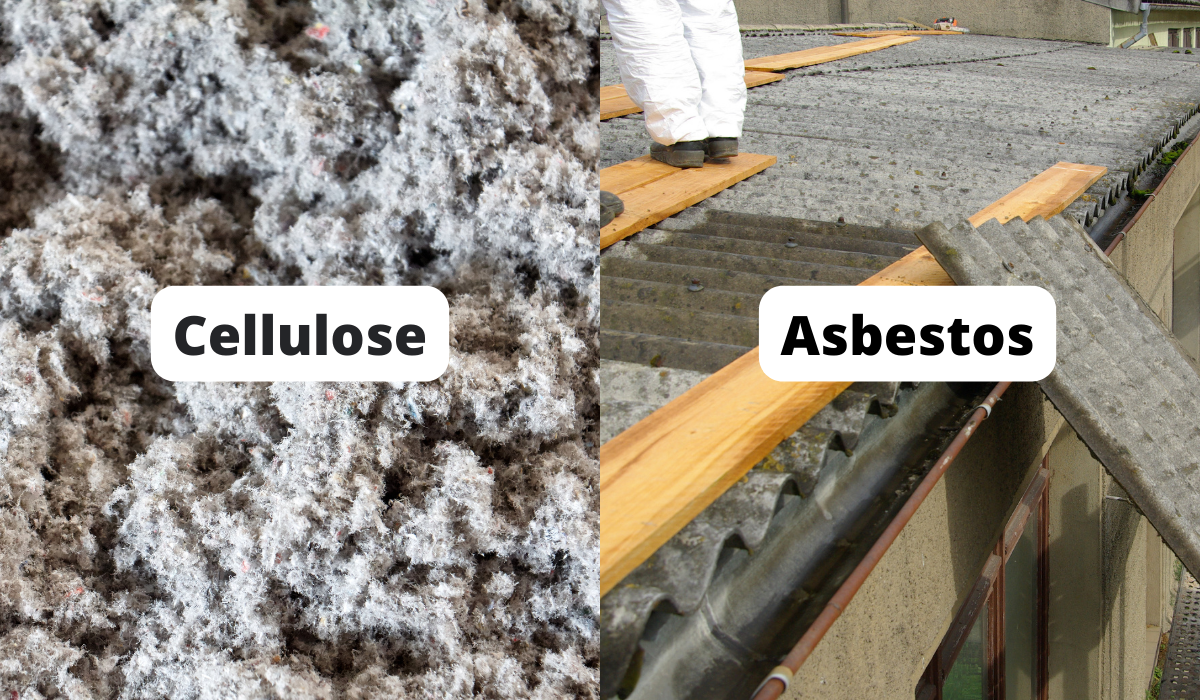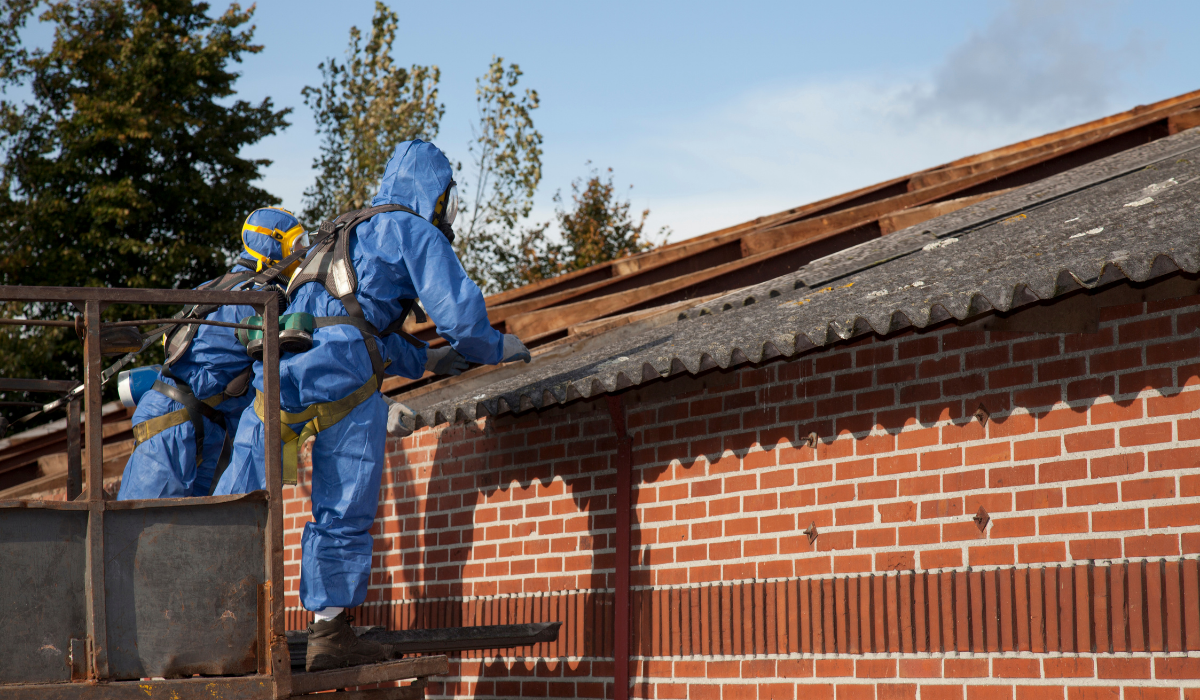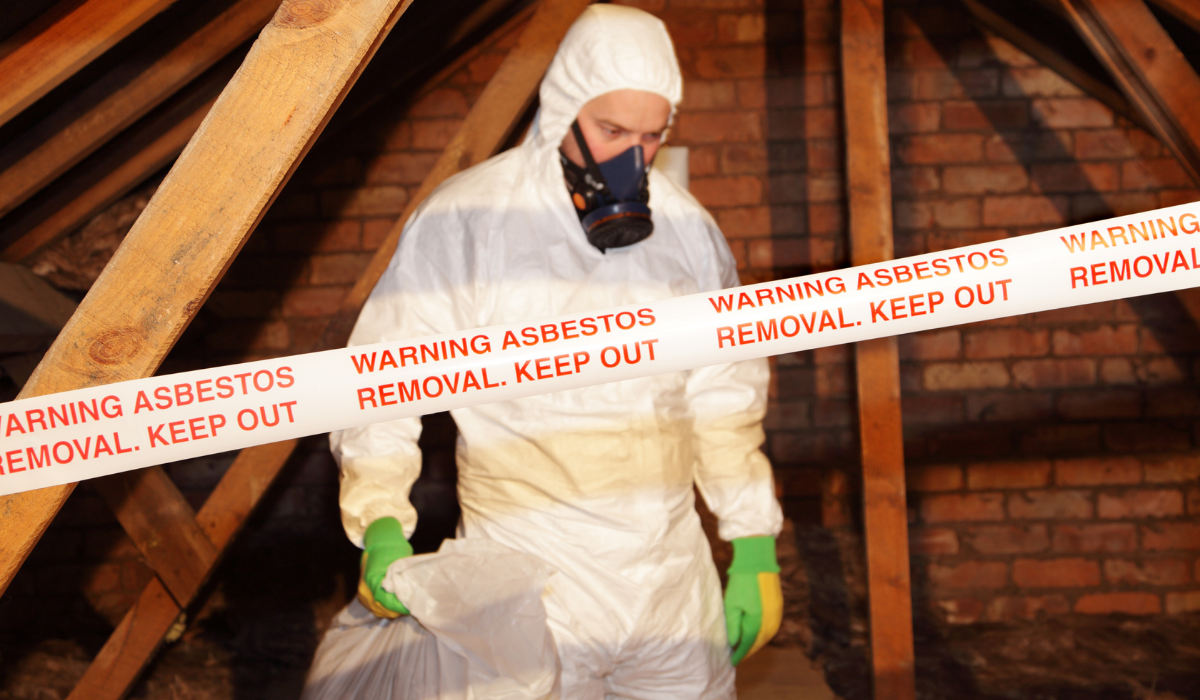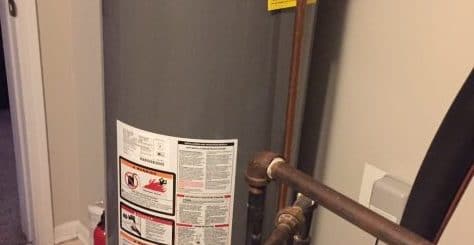How are Asbestos and Cellulose Insulation Different?
Asbestos insulationInsulation is a material used in buildings to reduce the tra... More is oftentimes found in older homes. Cellulose insulationInsulation is a material used in buildings to reduce the tra... More is also used during home constructions and is made of recycled materials. While both types of insulationInsulation is a material used in buildings to reduce the tra... More share similarities, they have major differences. Here are how the two building materials differ.

Prior to the 1980s, asbestos was typically used as insulationInsulation is a material used in buildings to reduce the tra... More material in both residential homes and commercial buildings. This type of insulationInsulation is a material used in buildings to reduce the tra... More was fire-retardant, which made it a desirable material for use in construction. As a result, asbestos insulationInsulation is a material used in buildings to reduce the tra... More grew in popularity.
It wasn’t until much later that exposure to asbestos was linked with health issues. Breathing in asbestos fibers or otherwise having long-term exposure to it can cause lung cancer, asbestosis, and mesothelioma. Since the discovery, builders no longer use asbestos as insulationInsulation is a material used in buildings to reduce the tra... More in buildings. In fact, EPA proposed to ban continuing use of Asbestos to protect people from cancer risk.
Today, instead of asbestos, builders use safer alternatives, such as cellulose and fiberglass insulationInsulation is a material used in buildings to reduce the tra... More. Cellulose is manufactured with recycled materials and is equally efficient in suppressing fires. Though cellulose and asbestos insulationInsulation is a material used in buildings to reduce the tra... More are comprised of different materials, they look very similar.
Difference 1: Materials
As a natural mineral, asbestos is soft and flexible. Asbestos resists heat and corrosion, which is why it was predominantly used from the 1950s until the 1980s in building constructions. Since the material withstands heat, asbestos insulationInsulation is a material used in buildings to reduce the tra... More served as a fire retardantA retardant is a substance applied to slow down or prevent t... More as well as an insulator.
Cellulose insulationInsulation is a material used in buildings to reduce the tra... More, on the other hand, is made from a variety of materials. Recycled newspapers, cardboard, hemp, straw, and other materials are commonly used to manufacture cellulose insulationInsulation is a material used in buildings to reduce the tra... More. Paper-based cellulose mixtures are treated with boric acid to give it fire-resistant properties.
Cellulose insulationInsulation is a material used in buildings to reduce the tra... More is available as different types: dry cellulose and wet spray cellulose. The former, also known as loose fill insulationInsulation is a material used in buildings to reduce the tra... More, is blown into the wall as insulationInsulation is a material used in buildings to reduce the tra... More material. The latter is combined with water during the spraying process, thereby providing a better seal and preventing heat loss.
Difference 2: Locations
Asbestos insulationInsulation is a material used in buildings to reduce the tra... More can still be found in older residential homes. The attic, drywall, tiles, and tile grout are where the material is most commonly located. As long as the building’s occupants are not exposed to airborne asbestos fibers, such as via wall cavities, they are generally safe.

Asbestos may have been used as pipe insulationInsulation is a material used in buildings to reduce the tra... More in older homes. The insulationInsulation is a material used in buildings to reduce the tra... More material may be found wrapped around pipes in the basement, utility rooms, and furnace rooms. An outer casing holds the asbestos insulation against the fully wrapped pipes.
Cellulose insulationInsulation is a material used in buildings to reduce the tra... More is nowadays primarily used in newer constructions and may be found inside walls, in pipes, and around wiring. As it insulates the home, this fire-resistant material also suppresses fires. Since cellulose consists of recycled materials, homeowners who wish to go green consider it desirable.
Difference 3: Appearance
Asbestos insulationInsulation is a material used in buildings to reduce the tra... More may come in the form of loose-fill (also known as blown-in) insulationInsulation is a material used in buildings to reduce the tra... More. The product is made from a variety of materials and is easily identifiable by its loose and lumpy form. Its texture may appear as fluffy or granular. Loose-fill insulationInsulation is a material used in buildings to reduce the tra... More does not have a backing.
Vermiculite insulationInsulation is a material used in buildings to reduce the tra... More is a commonplace household material that contains asbestos. Its general appearance resembles small pebbles, and its colors are typically silvery-gold or grayish brown. As a material mined from the earth, this insulationInsulation is a material used in buildings to reduce the tra... More expands when heated and creates stony-looking particles.
Cellulose insulationInsulation is a material used in buildings to reduce the tra... More, manufactured with a high percentage of recycled materials, resembles shredded gray paper. Loose-fill cellulose insulationInsulation is a material used in buildings to reduce the tra... More may appear as gray in color, soft to the touch, and without any visible shine. Builders have a choice between using batt and blanket forms of cellulose insulationInsulation is a material used in buildings to reduce the tra... More.
Difference 4: Health Risks
Asbestos insulationInsulation is a material used in buildings to reduce the tra... More becomes dangerous when the fibers are released into the air and are breathed in. This is the reason homeowners are advised to avoid disturbing the asbestos insulationInsulation is a material used in buildings to reduce the tra... More. By leaving the insulationInsulation is a material used in buildings to reduce the tra... More undisturbed, the home’s occupants reduce their risk of exposure.
Homeowners who suspect the home’s insulationInsulation is a material used in buildings to reduce the tra... More contains asbestos may utilize an asbestos testing kit, which is available for consumer use. Alternately, a sample may be sent to an approved lab for testing. If asbestos is found, homeowners can remove it with the help of a local asbestos abatementAbatement refers to the process of reducing, removing, or co... More company.

Since cellulose insulationInsulation is a material used in buildings to reduce the tra... More consists primarily of recycled newspapers, cardboard, or sometimes even bits of denim, the material is environmentally friendly and does not pose as a health hazard to the home’s occupants. This is the reason cellulose insulationInsulation is a material used in buildings to reduce the tra... More is today’s alternative to asbestos insulationInsulation is a material used in buildings to reduce the tra... More.
Removing asbestos from a property requires the services of an asbestos removal company. Especially for large projects, such as areas containing more than 10 square feet of asbestos, a high risk of exposure is likely. A professional contractor will put into place safety measures to prevent cross-contaminationCross-contamination occurs when harmful substances, such as ... More.
Utilizing an asbestos removal company is advised, since attempting to remove the material via a DIY task can cause the homeowner more costly issues later—plus, the asbestos problem will not be entirely removed. While asbestos removal of a large area is a major investment, it reduces health safety risks.
When asbestos insulationInsulation is a material used in buildings to reduce the tra... More must be removed from your property, consult the experts. Call a locally based asbestos abatement company with years of experience, skilled teams of specialists, and the right equipment to properly remove all traces of asbestos from your home.
Technicians arrive on site and conduct a visual assessment to locate potential problem areas. If the insulationInsulation is a material used in buildings to reduce the tra... More is suspected to contain asbestos, they collect samples and test them for asbestos content. The test results determine whether the asbestos particles should be removed entirely or encapsulated.
Whether asbestos is found within the wall or attic insulationInsulation is a material used in buildings to reduce the tra... More, vinylVinyl is a durable synthetic plastic material commonly used ... More floor tiles, electric breakers, hot water pipe blankets, or siding, specialists can fully remove the materials and ensure your home is safe from asbestos exposure.












